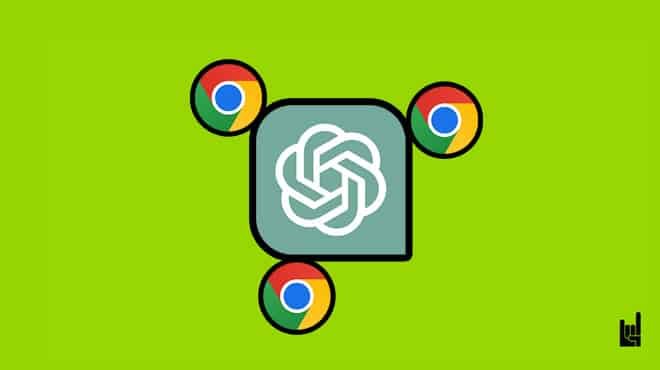ChatGPT: The cure to everything #not
In recent months, ChatGPT has seen a surge in popularity as users turn to it for a wide variety of tasks—some well within its capabilities and others where it serves as more of a supporting tool. From requests to “create an SEO-optimized blog post” to “give me the telephone numbers of the best companies in the pharma industry” or even “analyze the pattern of user behavior,” it’s clear that people are exploring the boundaries of what ChatGPT can do. However, not all these tasks fall squarely into its core functionality. For instance, ChatGPT excels in generating and organizing text, explaining complex concepts, and brainstorming ideas. Still, it cannot perform actions like data scraping, advanced data analysis or direct database analysis—at least, not without external tools or workflows.
At the same time, the versatility of ChatGPT has opened doors for creative ways to integrate it into processes it wasn’t explicitly designed for. This includes areas like SEO content generation, which we’ve explored in previous posts, and scraping workflows, where ChatGPT can assist in structuring and analyzing your collected data.
Today, we shift our focus to the intersection of ChatGPT and data analysis models. Specifically, we’ll analyse how ChatGPT can support and enhance tasks in econometrics, machine learning, rule-based automation, and generative AI—each of which uniquely plays a role in data analysis and decision-making. While ChatGPT cannot replace specialized tools or statistical models, it can be a powerful complement, helping simplify complex concepts, structure workflows, and even generate creative insights based on data.
Keep reading as we break down these data analysis models, explore their applications, and show how ChatGPT can be a valuable ally in unlocking their potential.
Models for Data Analysis
Econometrics, Generative AI (Gen AI), Deep Learning, and Rule-Based Automation are distinct fields or approaches within data analysis, artificial intelligence, and automation. Here’s how they differ:
Econometrics
A branch of economics that applies statistical methods to analyze economic data and test hypotheses.
- Purpose: Primarily used to understand economic relationships, forecast economic trends, and evaluate policies.
- Techniques: Uses regression analysis, time-series analysis, and other statistical tools.
- Example Applications:
- Estimating the impact of interest rates on GDP.
- Understanding the relationship between education levels and income.
Generative AI (Gen AI)
A subset of AI focused on generating new content, such as text, images, audio, or code, by learning patterns from existing data.
- Purpose: Create novel outputs that resemble the data it was trained on.
- Techniques: Uses models like transformers (e.g., GPT, DALL·E, Stable Diffusion).
- Example Applications:
- Generating marketing copy or product descriptions.
- Creating artwork or synthetic images.
- Writing code snippets.
Deep Learning
A subset of machine learning that uses neural networks with many layers (hence “deep”) to model complex patterns in data.
- Purpose: Excels at tasks involving large datasets and unstructured data like images, video, and text.
- Techniques: Includes convolutional neural networks (CNNs) for images, recurrent neural networks (RNNs) for sequences, and transformers for language.
- Example Applications:
- Image recognition (e.g., self-driving cars).
- Natural Language Processing (e.g., chatbots, translations).
- Predicting stock prices or disease progression.
Rule-Based Automation
Automation driven by predefined rules or logic, typically written explicitly by programmers.
- Purpose: Automate repetitive, predictable tasks with clear instructions.
- Techniques: Uses “if-then” rules, decision trees, or business process management tools.
- Example Applications:
- Automatically processing invoices based on set criteria.
- Email filtering based on user-defined rules.
- Triggering actions in robotic process automation (RPA).
Key Differences
| Aspect | Econometrics | Generative AI | Deep Learning | Rule-based automation |
|---|---|---|---|---|
| Focus | Economic data analysis | Generating new content | Complex pattern modeling | Automating clear tasks |
| Approach | Statistical | AI-driven | AI-driven | Logic-driven |
| Data Type | Structured | Structured/Unstructured | Structured/Unstructured | Structured |
| Flexibility | Limited | High | High | Low |
| Interpretability | High | Low | Low | High |
Choosing the Right Tool
If you feel confused, I’m with you —there are many approaches to choose from, and ChatGPT (or Generative AI) is not a one-size-fits-all solution. The most common and distinct fields or approaches in data analysis, artificial intelligence, and automation include Econometrics, Generative AI (Gen AI), Deep Learning, and Rule-Based Automation. To determine the best approach, consider these five (5) key questions:
What’s the cost of being wrong?
If the cost of error is high, such as in medical diagnoses or autonomous driving, more interpretable models like rule-based automation or econometrics are preferable. For scenarios where errors are less critical, such as recommendation systems, experimental approaches like deep learning or Generative AI can be utilized.
Do you need to explain the decisions your model makes?
If explainability is essential, as in finance or law, models like econometrics or rule-based automation are more suitable due to their clear decision-making processes. If explainability is less critical, black-box models like deep learning or Generative AI can be used.
Do your models need to generate consistent results?
For applications requiring consistent outcomes, like banking systems, deterministic methods like rule-based automation or econometrics are ideal. If variability is acceptable, such as in creative tasks like artwork generation, Generative AI or deep learning may be better options.
Does your data have a clear source of truth?
When a defined ground truth exists, such as in structured data applications like credit scoring, econometrics or rule-based automation are effective. For tasks without a strict source of truth, like text or image generation, Generative AI or deep learning excel.
Does your training data reflect operational conditions?
If training data closely matches real-world conditions, econometrics or rule-based automation are reliable as they depend on clear patterns. If conditions are unpredictable, such as in voice recognition or generative models, deep learning or Generative AI perform better due to their generalization capabilities.
In summary
- Econometrics: Ideal for hypothesis testing and policy evaluation in economics.
- Gen AI: Great for creative tasks and generating diverse, novel outputs.
- Deep Learning: Best for tasks requiring understanding of complex, non-linear patterns.
- Rule-Based Automation: Perfect for straightforward, repetitive tasks with clear logic.
Data Analysis Approach Matrix
| Questions | Gen AI | Deep Learning | Econometrics | Rule-based automation |
|---|---|---|---|---|
| What’s the cost of being wrong? | 🫤 | 🫤 | 😀 | 😀 |
| Do you need to explain the decisions? | 🤢 | 🤢 | 😀 | 😀 |
| Do your models need to generate same answers? | 🤢 | 🤢 | 😀 | 😀 |
| Does your data have a source of truth? | 🤢 | 🫤 | 😀 | 😀 |
| Does your training data reflect real conditions? | 🫤 | 🫤 | 😀 | 😀 |
Econometrics and ChatGPT
While ChatGPT can assist in econometrics-related tasks, the actual data analysis and modeling require specialized software like R, Python, STATA, or SPSS.
ChatGPT itself does not perform econometric analysis directly. Instead, you can use ChatGPT as a support tool in various stages of the econometric workflow, such as:
1. Problem Definition and Hypothesis Generation
- How ChatGPT Helps: You can use it to brainstorm research questions, clarify concepts, or suggest potential hypotheses for analysis.
- Example:
“What factors might influence consumer willingness to pay for premium products, and how can they be measured?”
2. Model Selection
- How ChatGPT Helps: It can explain different econometric models (e.g., linear regression, panel data models) and suggest which ones might suit your problem.
- Example:
“Which econometric model should I use to analyze the impact of advertising spend on sales over time?”
3. Data Preparation Guidance
- How ChatGPT Helps: Provides advice on handling missing data, transforming variables, or setting up datasets for econometric analysis.
- Example:
“How do I handle multicollinearity when preparing data for a regression model?”
4. Interpretation of Results
- How ChatGPT Helps: Assists in interpreting statistical outputs, such as coefficients or p-values, and translating findings into actionable insights.
- Example:
“How do I interpret a negative coefficient in a multiple regression model?”
5. Writing Reports
- How ChatGPT Helps: It can draft clear, concise summaries of your econometric findings or create presentations for stakeholders.
- Example:
“Draft an executive summary explaining how TV advertising impacts monthly sales.”
6. Scenario Simulations
- How ChatGPT Helps: Use ChatGPT to simulate hypothetical scenarios or explain the implications of your econometric findings.
- Example:
“If my model predicts a 10% increase in sales with a 5% increase in advertising spend, how can I explain this to a non-technical audience?”
Different Models & Marketing Data Analysis
Econometrics applies to marketing by using statistical methods to analyze consumer behavior, evaluate marketing strategies, and measure the effectiveness of campaigns.
Here is an example: econometric models can help determine the impact of advertising spend on sales, optimize pricing strategies, or forecast demand based on past trends and external factors. This data-driven approach enables marketers to make more informed and effective decisions.
Generative AI applies to marketing by creating personalized, engaging content at scale and improving customer interaction. GenAI can be used to generate tailored ad copy, social media posts, product descriptions, and even customer service chat responses. By analyzing customer preferences and trends, it can deliver creative outputs that resonate with target audiences
Here is an example: Using a GenAI tool like ChatGPT to create unique email campaigns for different customer segments based on their purchasing history and preferences.
Machine and Deep Learning applies to marketing by analyzing large datasets to uncover patterns, predict trends, and optimize decision-making. ML algorithms can help with customer segmentation, churn prediction, and recommendation systems, ensuring marketing efforts are targeted and efficient.
Here is an example: A recommendation engine that suggests products to customers based on their browsing and purchase history, as seen on platforms like Amazon or Netflix.
Rule-Based Automation applies to marketing by automating repetitive tasks based on predefined rules, improving efficiency, and ensuring consistency. Common uses include email drip campaigns, lead scoring, and triggering specific actions based on customer behavior, such as sending a discount code after cart abandonment.
An example is Setting up an automated email sequence that sends a welcome email after sign-up, a product showcase the next day, and a discount code if no purchase is made within a week.
Conclusion
By carefully choosing AI approaches that match specific business needs and data dynamics, organizations can uncover valuable insights, streamline processes, and make better decisions. While AI tools like ChatGPT can enhance analysis, it is essential to remember that they are not a panacea. Leveraging AI-driven analysis effectively requires thoughtful implementation and a clear understanding of its limitations alongside its strengths.
Do you need help with any of these? We are an AI marketing agency – you can contact us here and we’ll let you know how we can help you depending on your case.
Was this article useful?

Theodore has 20 years of experience running successful and profitable software products. In his free time, he coaches and consults startups. His career includes managerial posts for companies in the UK and abroad, and he has significant skills in intrapreneurship and entrepreneurship.



